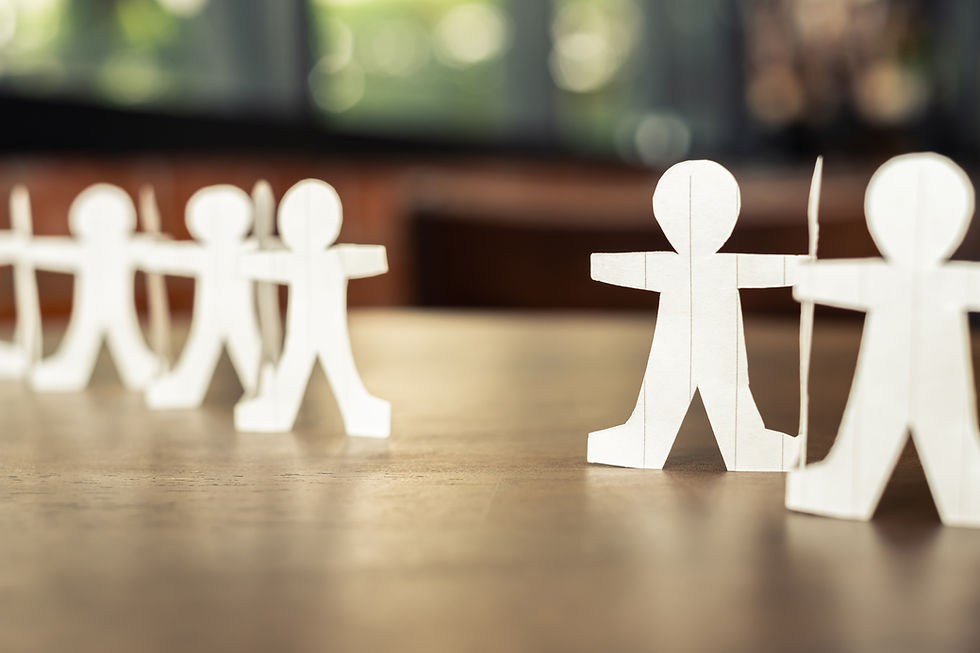Building Bridges in Challenging Times
- emilytweiner
- Apr 1
- 4 min read

I was delighted to be featured by the RSA US for their Women’s History Month series focusing on the ways social capital can make a difference, especially for women. As I answered their interview questions, I thought about the crucial role that social connections play and how much I’ve learned by developing relationships with people who are vastly different from myself. As I shared in the article:
"In a world that often feels more divided than ever, it's essential to cultivate opportunities to build bridges across different types of people. We sometimes think of social capital as this large, formal construct, but most connections happen on a much smaller, micro level. Developing ways for people to engage in both bonding and bridging social capital are crucial for building strong, healthy communities. Most people are comfortable with bonding social capital – engaging with people we have something in common with, like a political ideology, hobby, religion, ethnic background, or anything that gives us a shared language and understanding. Bonding social capital is important for our sense of belonging and identity, and at the same time, staying only within our shared communities is where we can run into trouble.
We grow by learning from people who have different experiences and we do that through bridging social capital — connecting with people who are different from us. While I have empathy and can imagine certain situations, I am limited by my existing knowledge and lived experience. Intentionally interacting with people who have different orientations expands my own learning and connection to others. Once we care about our neighbors, we’re more likely to soften our rhetoric and work towards common goals."
There has been plenty of research, news stories, and even declarations from government officials about the importance of social connections and the need to build bridges across divides. But there has been a marked sense of urgency in these messages as our world is becoming more divided and people are feeling more disconnected than ever.
More in Common, a nonprofit focused on bringing people together to engage meaningfully in civic and cultural life, recently published The Connection Opportunity, the results of their two-year study that addressed two key questions: Do Americans want to connect with people who are different from them? And, if so, what’s standing in their way?
The good news:
The majority of Americans across all demographic groups are interested in connecting with people who are different from them and are specifically interested in working together to achieve a shared goal that improves their communities.
The bad news:
A quarter of respondents feel they lack the opportunity to connect with people who are different from them and about 15% believe that other groups don’t want to interact with them. Unsurprisingly, Americans are least comfortable connecting across political differences, citing such reasons as being misunderstood or concerns for personal safety.
The optimistic news:
Connecting with people from different backgrounds sparks a greater desire to connect again, which means individuals can foster stronger cultures of connection and encourage the people around them to do the same.
So, how do we break through our barriers (whether real or perceived) to establish bonds with people who are vastly different from ourselves?
The report identifies seven levers for change that community leaders, organizations, and individuals can implement to foster greater connection. All seven are important and useful for people who are intentionally focused on curating community. But as I mentioned in the RSA US interview, it comes down to establishing trust which requires us to show up with intention, attention, and curiosity.
“I start with intention and a desire to connect. This may sound silly, but many people communicate without considering why they are connecting. I consciously envision what I hope both myself and the other person(s) will walk away with. Then, I pay attention to how others communicate, whether overtly or subtly. This requires me to be extra observant of things like context, side comments, and facial expressions that can unlock the opportunity for a deeper understanding. Showing that I’ve taken the care to remember details about others immediately makes them feel more valued and can establish deeper levels of trust. Finally, I ask open-ended questions. It's easy to make assumptions or listen just to respond, but I aim to listen with a mindset of curiosity. I try to weave in questions that encourage others to share their thoughts. My goal is to learn and expand my understanding of the other person. Learning from others establishes trust and opens the door for continued connection.”
Most importantly, connecting with people doesn’t have to be a big, formal endeavor. You can start small by talking with the person in line at the grocery store or attending a cultural event that features people you may not have encountered on your own. We frequently think we need some formal process for beginning to connect with others. But the only thing you need to get started is your desire to connect as your authentic, curious self.
How are you building bridges to expand your learning and world view? I’d love to learn from you too! Feel free to join the conversation on our Substack to share your thoughts.
If you want to develop your leadership and connecting skills, check out our open enrollment workshops or learn more about our individual and group coaching opportunities. Or send an email to hello@theconnectors.net to get a conversation started with me.





Comments